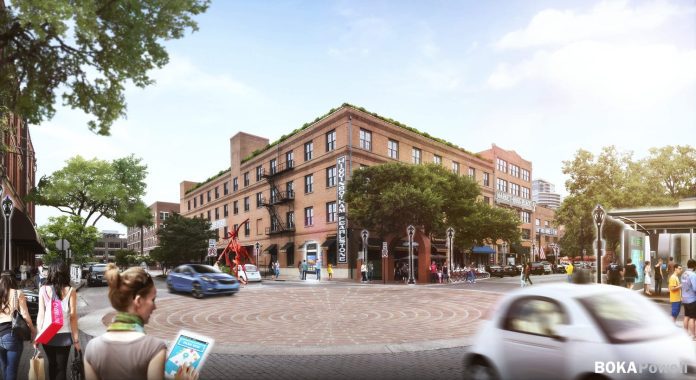The City of Dallas has appointed its first chief innovation officer (CINO) to lead its newly created ‘office of innovation’ and drive “operational and technological improvements” in the city.
The appointment, part of a top-level reshuffle in support of the city’s digital strategy, comes as the first proof-points from its downtown ‘living lab’ come to light.
The year-old project in a four-block district downtown, led by AT&T as part of the public-private Dallas Innovation Alliance, has seen pedestrian footfall jump 13 per cent, crime fall by six per cent, and energy usage of street lights drop by 35 per cent.
The appointment of former Los Angeles and Philadelphia city exec Laila Alequresh as Dallas CINO comes on the heels of another senior appointment within the city’s digital team, with Hugh Miller joining last month as chief information officer (CIO) from the same role within the City of San Antonio. Miller replaced William Finch as Dallas CIO.
The CIO and CINO roles are different. Where Miller is engaged in more traditional infrastructure projects, Alequresh has been tasked with cultural change, both internally and externally. The city said in a statement she will “introduce new ideas to city leaders and encourage new and innovative projects”.
Alequresh will serve as a consultant and facilitator for city employees, local businesses, and organisations seeking to develop new solutions to civic challenges and city-wide systemic issues, it said.
T. C. Broadnax, Dallas city manager, said the role is “critical in formulating non-traditional approaches and solutions” to address the city’s challenges.
Alequresh commented: “It’s a key part of a holistic approach for making sure city initiatives have high-quality performance outcomes and maintain a ‘service-first’ outlook.”
Previously, Alequresh was executive advisor to the city government in Los Angeles, with a view to improve structures and processes in city operations. She has also held the role of performance management director for the City of Philadelphia, responsible for “data centric, citizen focused strategies”.
Meanwhile, the first results from the city’s ‘living lab’ experiment, which has focused on nine “integrated smart city projects” in a four-block corridor in the city’s business district, are in, with a 13 per cent year-on-year increase in pedestrian footfall, a 12 per cent jump in revenue for local businesses, and a six per cent reduction in crime.
As well, the project, has claimed a 35 per cent annual eduction in energy from its newly deployed smart street lighting.
AT&T – which leads the project, and is making a showcase of its early results as part of a broader smart-city drive, alongside its work in Chicago, Kansas City, New York, Pittsburgh, San Diego, and San Jose – organised the lighting, as well as new ‘digital infrastructure nodes’ and digital kiosks.
It reckons the city would achieve an annual reduction in its energy bills of $90 million if it rolls out intelligent controls to all of its 85,000 street lights.
The new digital information kiosks were used by 440 people per month, on average, with more than half (53 per cent) utilising multiple functions, including transit information, local points of interest, public facilities and a ‘selfie’ function.
Michael Zeto, vice president of IoT solutions and general manager of smart cities at AT&T, said Dallas is using the carrier’s smart tech and integration offer to “solve the problems that matter most to the community”.
Insights from the living lab project will be used to evaluate the potential of smart city technologies. First signs are positive, the group has declared.
Another element of the project has been to make available a dashboard of city data to the public, and notably to students, researchers, and startups.
The first three projects available on the dashboard are intelligent lighting, the interactive digital kiosk, and environmental sensor kit.
“The dashboard is a key step in fulfilling the DIA’s mission to provide open data access and transparency for DIA projects, as well as providing visual ways for citizens to play with and easily understand the value of data,” the DIA said in a statement.
Upcoming additions will include pedestrian traffic, water and irrigation, parking and publicly available data sources including public safety, 311 reporting and more.
Shanthi Rajaram, president and chief at Amazech, responsible for the dashboard solution, commented: “With the ever-increasing automation and connectedness of our world, data is abundant and can be overwhelming.
“The ability to integrate and visualise data in an easy to comprehend way provides an avenue to maximise the value of data.”
Phase two of the project will see the Dallas Innovation Alliance develop new projects in Southern Dallas, focused on challenges around mobility, the digital divide, and public safety.

